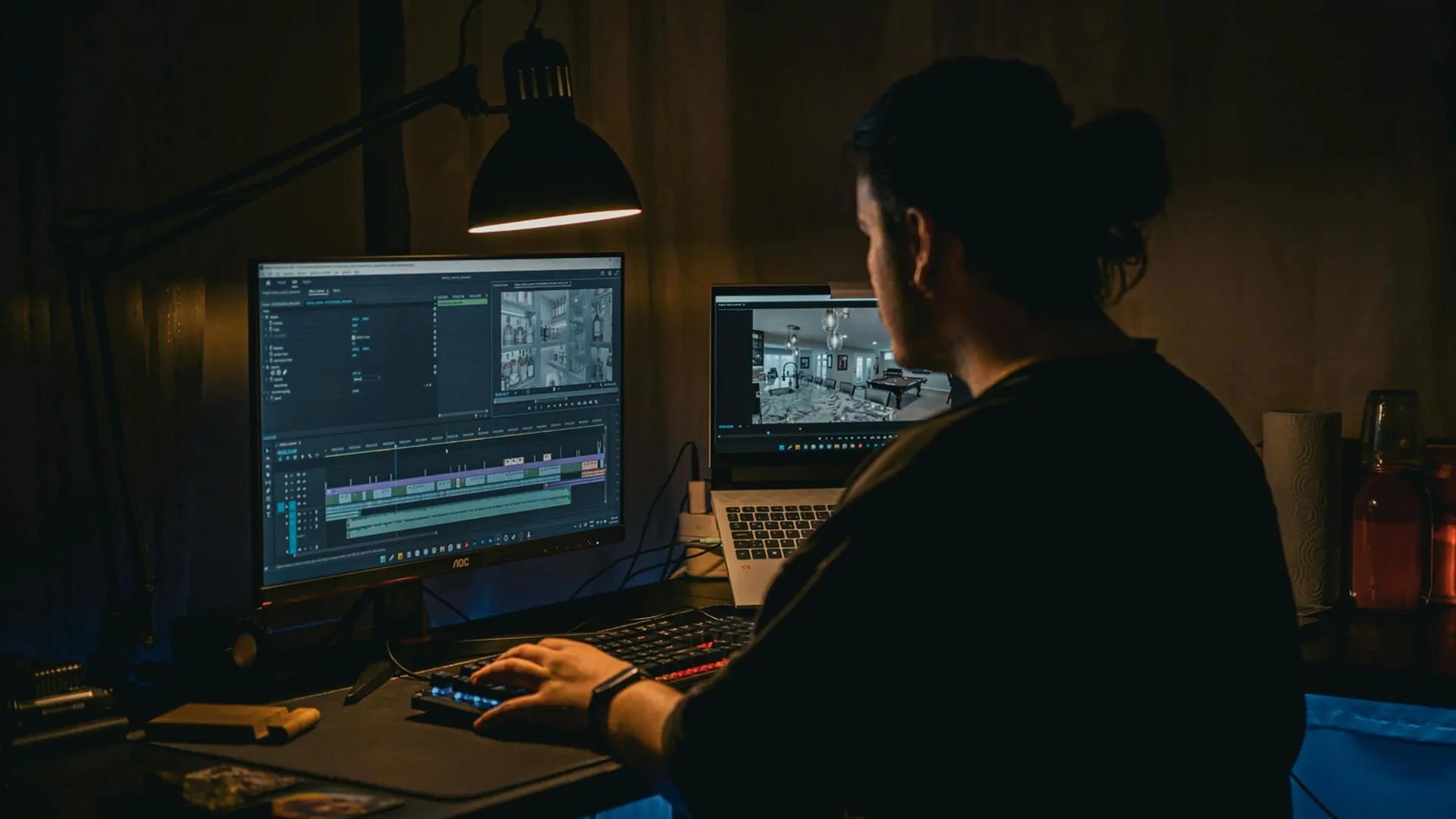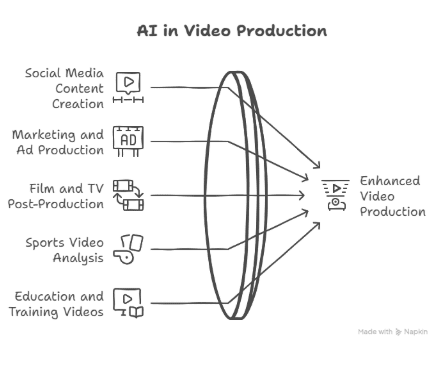Video editing has always been a mix of art and patience. Think about it: every cut, every transition, every adjustment is a step toward creating a story that resonates. From YouTubers crafting captivating content to filmmakers shaping cinematic masterpieces, video editing is the backbone of visual storytelling. But let’s be honest—while the results are magical, the process itself can be downright tedious and time-consuming.
Now, imagine if there was a way to make this process faster and smoother without sacrificing creativity. That’s where AI steps in. These smart tools are changing the game for videographers, taking over repetitive tasks and freeing up time for the creative work that really matters.
In this blog, we’ll dive into how AI is shaking up the world of video editing. We’ll talk about the challenges of traditional editing, how AI simplifies labor-intensive tasks, and the exciting ways it’s being used today. Plus, we’ll glimpse the future to see where all of this is headed. Ready to explore this new chapter in video editing? Let’s dive in.
Current Challenges in Video Editing
Before we understand the impact of AI agents, it’s crucial to examine why they are needed in the first place. Video production and editing are complex, detail-oriented processes that require hours, or even days, of time and effort. Here are some common challenges faced by videographers:

1. Time-Consuming Tasks
Video editing often includes time-intensive tasks like cutting clips, syncing audio, color correction, and adding transitions. While rewarding in the end, these repetitive actions eat away at valuable hours. According to a study by Oberlo, video editors spend an average of 20-25 hours editing a 5-minute video. Source
2. Manual Adjustments and Errors
Every frame of a video must be carefully polished. Adjusting brightness, fixing shaky footage, or stabilizing audio manually can lead to inconsistent results and human error. In fact, a report from TechValidate indicates that 68% of video editors admit manual processes often lead to errors that require rework. Source
3. Skill Gaps
Not every content creator is a professional video editor. For those exploring video production without expert knowledge, navigating advanced editing software can feel like solving a puzzle without instructions. According to Statista, 56% of small creators feel overwhelmed by complex editing tools. Source
4. High Costs
Professional editing services can be expensive, which poses a barrier for small businesses and creators hoping to enhance their video quality affordably. A 2022 survey by Clutch found that professional video editing services cost between $75 to $150 per hour, which can be prohibitive for smaller projects. Source
Clearly, there is a growing need for more intuitive tools that balance high efficiency without sacrificing quality. This is where AI agents step in.
How AI Agents Simplify Video Editing
An AI agent for video editing functions as a digital assistant capable of automating labor-intensive processes. These agents use machine learning (ML) and artificial intelligence (AI) to analyze and enhance video content faster, smarter, and more effectively than traditional methods.
How AI Automation Works
AI tools process vast amounts of data and use neural networks to understand patterns within videos, such as dialogue, visual highlights, or redundant clips. For example:
- Auto-Cutting Clips – AI detects moments of silence or irrelevant content and trims footage accordingly.
- Visual Recognition – AI analyzes visual patterns to detect faces, gestures, or branded elements that should be highlighted.
- Audio Matching – AI syncs audio tracks with video timelines automatically, sparing editors from syncing challenges.
Benefits of Using AI Agents for Video Editing
Integrating AI for videographers offers numerous advantages that make video production faster and more creative. By streamlining workflows, AI minimizes repetitive editing tasks, allowing editors to focus on bigger creative decisions and achieve quicker project turnaround times. It also enhances quality by automatically improving video color, lighting, and resolution before manual adjustments, ensuring a polished final product. Additionally, AI brings cost efficiency, as tasks that once required large teams can now be handled by AI tools, helping creators and small businesses save money while delivering professional results.
Real-World Applications of AI in Video Production
AI in video production isn’t just theoretical; it’s already transforming workflows in several industries.
Social Media Content Creation
Platforms like TikTok and Instagram require video creators to produce high-quality, short-form content at lightning speed. AI-powered tools such as CapCut and Descript help automate captioning, resizing, and skin-smoothing to align perfectly with the platform’s requirements.
Marketing and Ad Production
AI agents help advertisers create multiple versions of a promotional video to suit different demographic preferences, allowing hyper-focused targeting. Tools like Pictory AI can generate quick and personalized ad variations.
Film and TV Post-Production
Big-budget studios are exploring AI editing tools for post-production activities like CGI integration and creating seamless transitions. For instance, AI-assisted color grading tools, like DaVinci Resolve, ensure each frame matches a director’s vision.
Sports Video Analysis
Brands working alongside sports industries use AI video editing to highlight key moments in games and generate instant highlights for broadcasts.
Education and Training Videos
AI can produce engaging instructional videos by adding captions automatically or summarizing hours of footage into concise, watchable edits.

What’s Next for AI in Video Editing? Future Trends to Watch
The rapidly evolving world of AI technology means exciting developments await video producers. Here are some trends gaining momentum:
1. Advanced Personalization
AI tools are rapidly advancing to offer highly personalized editing experiences. Imagine software that doesn’t just learn your editing style but also predicts your next move based on your habits. These tools could remember your favorite transitions, color grading preferences, and even specific keyboard shortcuts. This advanced customization would feel like working with an assistant trained to match your unique creative vision, allowing for faster workflows and fewer repetitive tasks.
2. AI Script Integration
Script-based video editing is becoming a game-changer. Tools like Runway ML are paving the way for AI to integrate screenwriting into the video production process directly. For example, an AI could analyze a script, identify key dialogue, and automatically assemble scenes to match the narrative flow. This automation would save countless hours of manual editing while ensuring that the visuals and dialogue are perfectly synchronized, simplifying the entire post-production process.
3. Real-Time Video Editing
Real-time video editing powered by AI has enormous potential for live broadcasts, sports events, and even live streaming. With advanced algorithms, editors could apply transitions, adjust visuals, and even correct errors while a live event is ongoing. For instance, during a live concert, AI could enhance lighting or adjust camera angles on the fly, elevating the viewer experience. This capability would drastically reduce post-production time and set a new standard for live event production.
4. Virtual Reality Editing
Virtual reality (VR) and augmented reality (AR) are pushing the boundaries of immersive storytelling, and AI is playing a vital role in their evolution. Editing VR footage is a complex task that requires spatial awareness and seamless transitions between 360-degree scenes. AI could simplify this process by automatically stitching together VR footage, optimizing resolution, and enhancing visuals for lifelike environments. This would enable creators to focus more on storytelling and less on tedious technical work, unlocking new possibilities for immersive experiences in gaming, education, and entertainment.
Unlock the Potential of AI Tools in Video Editing
AI agents are redefining what’s possible in the world of video editing. By addressing time-consuming frustrations and boosting access to professional-level results, these tools empower both seasoned editors and newcomers. No matter the scale of your project, AI for videographers is making creativity more accessible, streamlined, and efficient.
Are you ready to revolutionize your editing workflow? Don’t just imagine the possibilities; experience them for yourself. Explore our curated list of AI video-editing tools and find a solution that works for you today.
